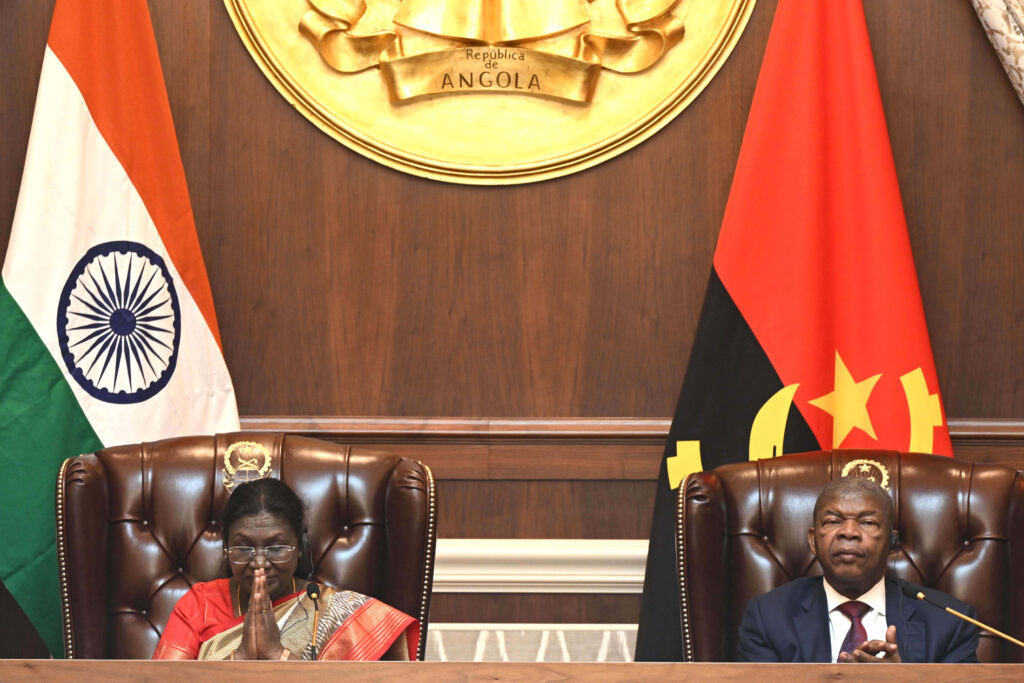By strategic design New Delhi is elevating Southern Africa as a strategic frontier of its Africa policy

Rao Narender Yadav / New Delhi
India’s pivot toward southern Africa reflects a growing recognition of the region as a vital hub for India’s energy and mineral security, maritime interests, and global institutional partnerships. The recent state visits by President Droupadi Murmu to Angola and Botswana, coupled with Prime Minister Narendra Modi’s earlier outreach to Namibia, underscore a deliberate effort to expand India’s footprint in a part of the continent that is rapidly becoming indispensable to its long-term developmental and geopolitical goals.
Increasingly, this engagement is being anchored in the regional architecture of the Southern African Development Community (SADC). By deepening collaboration with SADC, India aims to move beyond country-specific relationships and build a more integrated, strategic approach—one that aligns with shared development priorities, enhances regional influence, and supports the evolving dynamics of a multipolar world.
Energy and Minerals: Securing the Future
India is the world’s third-largest energy consumer and fourth-largest importer of critical minerals. For New Delhi, Angola, Namibia, and Botswana occupy distinct but complementary positions in strengthening resource security.
Angola, one of India’s major crude oil suppliers, remains central to diversification away from overdependence on West Asian energy. Discussions on joint ventures in oil and gas infrastructure underscore a desire to shift beyond buyer–seller dynamics into deeper industrial collaboration.
Namibia represents the minerals of the future. Its vast reserves of uranium, lithium, and rare earth elements align directly with India’s clean energy transition — from nuclear expansion to electric vehicle manufacturing. Joint exploration initiatives and green hydrogen cooperation signal that this relationship is being built around the economic architecture of the coming decades.
Botswana, meanwhile, is integral to India’s longstanding presence in diamonds. The focus is shifting from cutting and polishing toward greater participation in high-value processing, technology, and skilling — allowing India to reinforce its global leadership in the gems sector.
In all three cases, India is designing partnerships not only for economic advantage but for strategic autonomy.

Maritime Geography: A Tale of Two Oceans
Southern Africa sits at the crossroads of the western Indian Ocean and the South Atlantic — two vital maritime theatres that shape India’s trade and security environment.
Namibia’s and Angola’s Atlantic coastlines are increasingly important as global shipping shifts and new undersea networks are planned. Defence training, naval cooperation, and maritime domain awareness programmes indicate growing synergy. By engaging with states on both sides of the continent, India is strengthening the security of sea lanes that carry the bulk of its energy and commercial supplies.
This maritime calculus extends the Indo-Pacific conversation westward — positioning India as a stabilising presence in a region where other major powers have strong, and not always transparent, interests.
In July 2024 India and SADC signed a new Memorandum of Understanding (MoU) on economic cooperation. Complementing the MoU, business forums and sectoral dialogues are underway. For example, the “India–SADC Business Forum” convened in July 2025 brought together Indian companies and SADC regional stakeholders to explore investment opportunities across manufacturing, logistics, agriculture, mining, skills and digital trade.
Global South Leadership and Institutional Convergence
India’s evolving diplomacy in Southern Africa also reinforces its role as a voice of the Global South. The successful inclusion of the African Union into the G20 during India’s presidency has expanded the continent’s collective influence — and widened expectations from India as a partner.
Angola and Botswana share New Delhi’s positions on UN Security Council reform and fairer global financial governance. These political convergences are turning bilateral relationships into shared platforms for rebalancing world order — not rhetorically, but institutionally.
As India rises and Africa’s global significance accelerates, their renewed collaboration offers a blueprint for South-South cooperation in the 21st century. Southern Africa is fast becoming a central pillar of India’s presence in the continent and a key arena in shaping the future of a more balanced international order.
(Author is the Director, African Centre of India. Views are personal)